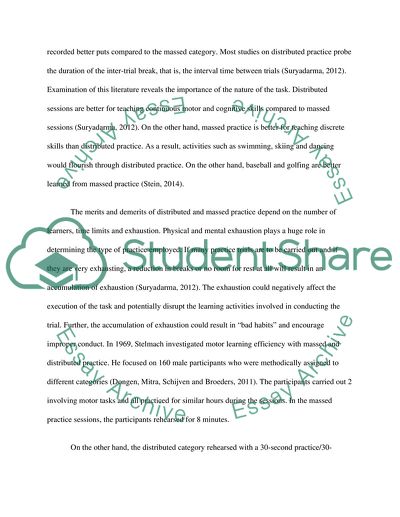Cite this document
(“Distributed vs Massed Practice Term Paper Example | Topics and Well Written Essays - 1000 words”, n.d.)
Distributed vs Massed Practice Term Paper Example | Topics and Well Written Essays - 1000 words. Retrieved from https://studentshare.org/psychology/1669211-distributed-vs-massed-practice-which-produces-better-learning
Distributed vs Massed Practice Term Paper Example | Topics and Well Written Essays - 1000 words. Retrieved from https://studentshare.org/psychology/1669211-distributed-vs-massed-practice-which-produces-better-learning
(Distributed Vs Massed Practice Term Paper Example | Topics and Well Written Essays - 1000 Words)
Distributed Vs Massed Practice Term Paper Example | Topics and Well Written Essays - 1000 Words. https://studentshare.org/psychology/1669211-distributed-vs-massed-practice-which-produces-better-learning.
Distributed Vs Massed Practice Term Paper Example | Topics and Well Written Essays - 1000 Words. https://studentshare.org/psychology/1669211-distributed-vs-massed-practice-which-produces-better-learning.
“Distributed Vs Massed Practice Term Paper Example | Topics and Well Written Essays - 1000 Words”, n.d. https://studentshare.org/psychology/1669211-distributed-vs-massed-practice-which-produces-better-learning.


